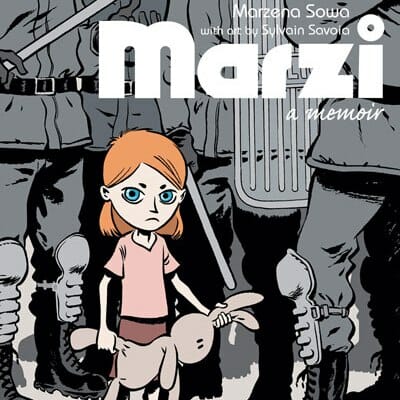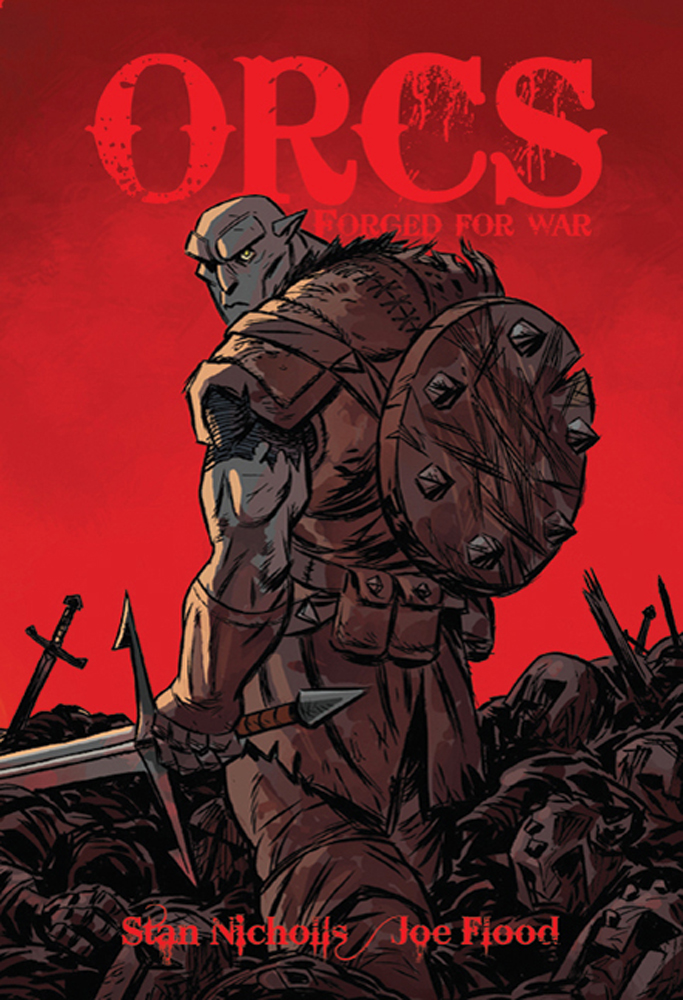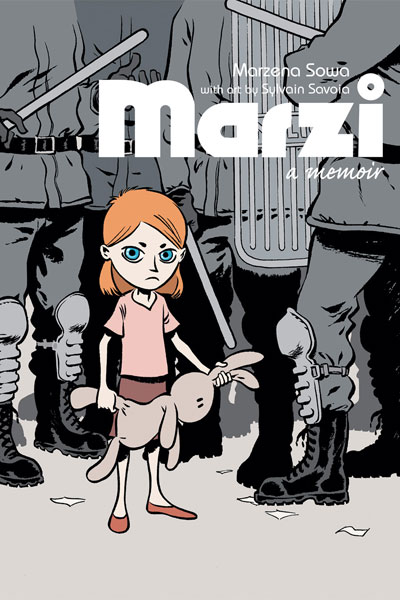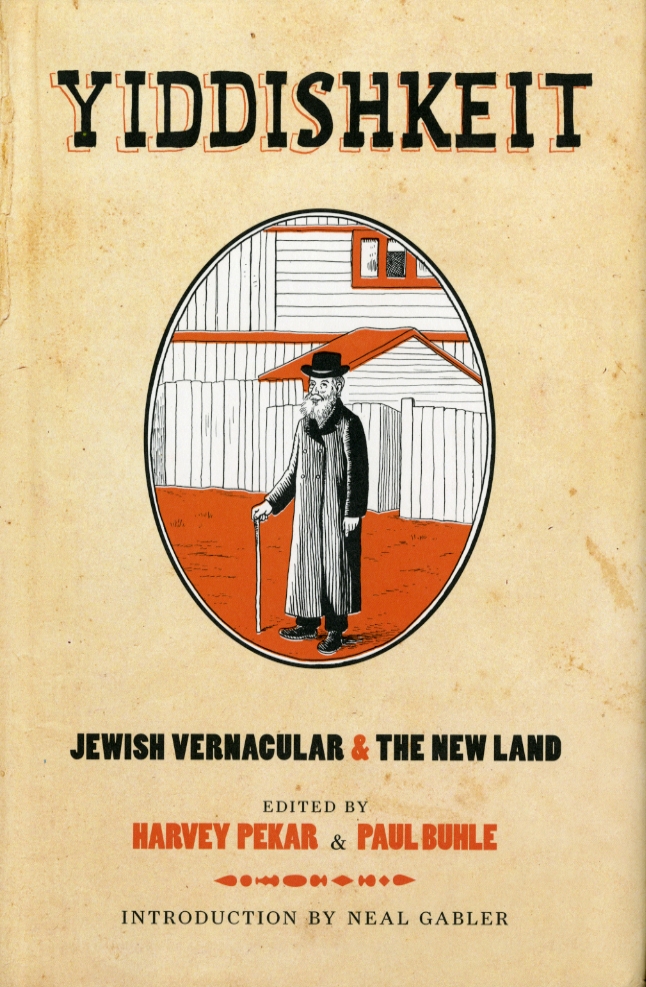
Each week, Paste reviews the most intriguing comic books, graphic novels, graphic memoirs and other illustrated books.

Mark Twain’s Autobiography 1910-2010
by Michael Kupperman
Fantagraphics, 2011
Grade: 8.3
Einstein can get bent. It’s Twain’s time to shine. Michael Kupperman’s enduring fascination with Mark Twain reaches its latest apex with this fictional autobiography. It turns out Twain didn’t die in 1910, but is actually immortal thanks to a wizard’s spell. Kupperman delves into the amazing facts behind the writer’s life since his erroneously reported death, revealing a peripatetic everyman genius who fully embodies every possible stereotype of the last hundred years. From discovering rock and roll with Dracula and the Wolfman during World War II to striking out with Sophia Loren on a spaceship above Roswell in 1947, Kupperman’s comics and brief text chapters are as absurd and hilarious as his regular Tales Designed to Thrizzle series. Kupperman’s prose is as lean and punchy as his strips, which this book could use more of, no matter how well his words mix the ridiculous and erudite. The two extended comic narratives are the funniest things here. Still, anybody who enjoys the Harvard Lampoon, the books of John Hodgman, or the convergence of the literary, historical, and inane will appreciate Kupperman’s work. (GM)

Orcs: Forged for War
by Stan Nicholls and Joe Flood
First Second, 2011
Rating: 5.8
I know First Second isn’t exactly a kiddie-only publisher, but it’s still a bit surprising to see the F-word sprinkled liberally throughout one of its books. Orcs: Forged for War is definitely R-rated, with profanity, gouts of blood, and boobies throughout, yet for all that, it isn’t exactly a mature work. High school and middle-school boys would seem to be the target audience. I haven’t read any of Nicholls’s non-graphic novels that tackle the same material, attempting to rehabilitate the reputation of one of fantasy’s most despised villains, but it does seem to translate well to work with pictures. There’s plenty of action as the orcs trudge through a barren landscape, hacking and slashing at dragons, goblins, humans, ogres, and more. Sure, it’s difficult to tell the orc characters apart. None of them have hair, and they don’t call each other by name frequently, so one is reduced to trying to remember relative head sizes. The plot is both better and worse than expected. There are hints of a much larger universe (one that no doubt exists in the novels), but they’re frustratingly unfulfilled, and (spoiler alert) the character who seems likely to betray everyone does, in fact, do so. The color is nice, though, and if you’re looking for a tale of warriors with more concern for honor than subtlety, this is your book. (HB)

Marzi
by Marzena Sowa and Sylvain Savoia
Vertigo, 2011
Grade: 7.3
Marzi is another look at the daily life of young girls living under oppressive regimes. Marzena Sowa grew up in Poland in the 1980s, and along with artist Sylvain Savoia has created these brief sketches of life in the final days of communist Poland. Marzi’s broken down into a series of vignettes largely focusing on how Sowa and her family occupy their time. Common themes are children playing with whatever they can find in their small urban apartments, young Sowa realizing the absurdity of the rationing process and shopping lines without quite grasping why they exist, and her absorbing the history unfolding in Poland without necessarily understanding it. Sowa intercuts personal observations like her feet’s sudden growth spurt with youthfully bewildered glimpses at her father’s political activism and Solidarity’s struggle for legal recognition and expanded freedom. It’s not breaking news that basic American staples like oranges and chocolate are rationed luxuries elsewhere in the world, but that doesn’t make it less frustrating or poignant to read about Sowa’s excitement over a rare candy bar or fruit shipment. Savoia’s art is both charming and pointed, with Sowa’s orange hair popping out as the only color amid pages of industrial brown and grey. The scenes are a little too disconnected and repetitive, but at its heart Marzi is simply the story of childhood in turbulent times. Maybe we can’t relate to the politics, but we can all relate to being a kid. (GM)

Yiddishkeit: Jewish Vernacular and the New Land
by Harvey Pekar and Paul Buhle
Abrams, 2011
Rating: 5.3
The last work of the late, great Harvey Pekar is more an effort of scholarship than a narrative, tracing the influences and history of Yiddish art and culture, especially in the United States. The idea is a good one, and there are many new stories to be told, but unfortunately the execution is a bit of a grab bag. This definitely isn’t pure comics. There are long sections of just text, including a full-length play. And the scholarship doesn’t seem comprehensive either. What it adds up to is a bunch of information about individual Yiddish artists (in movies, literature, song, and more), but not much of a thesis, other than: Yiddish art is good. That thesis isn’t exactly proven, either, although it’s a difficult one to hammer home when you’re arguing it about work produced in a language much of your audience doesn’t speak. There is some compelling stuff here, and the more Pekar is involved, the better it is, but a lot of the material, including one-page stories illustrated by Spain Rodriguez, isn’t particularly strong. If anything, it seems like an initial effort that could, with luck, promote more interest in the field than a finished, polished product. (HB)